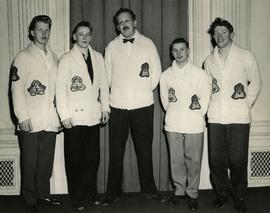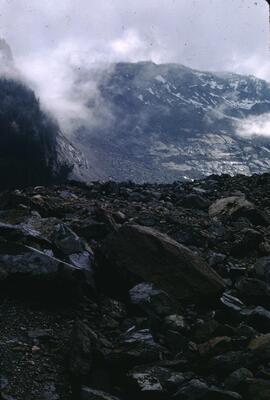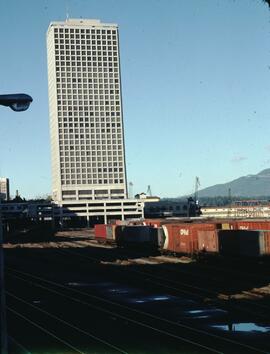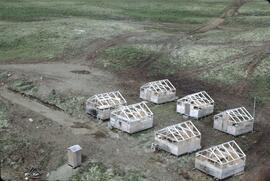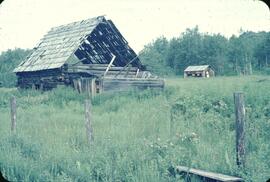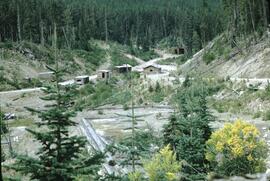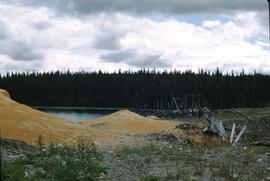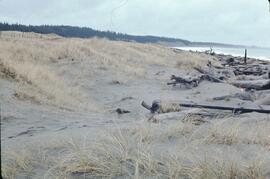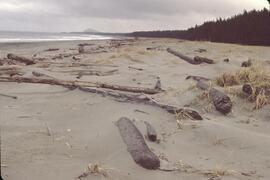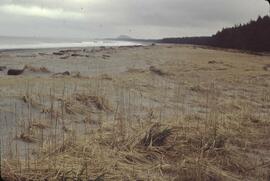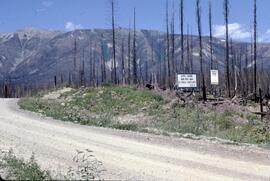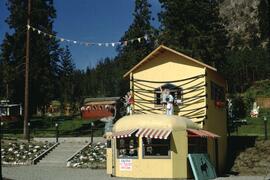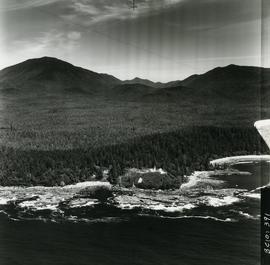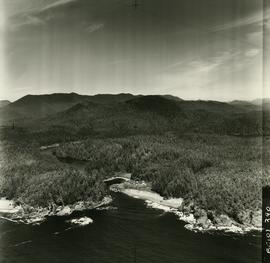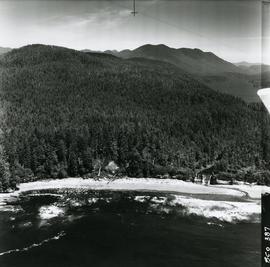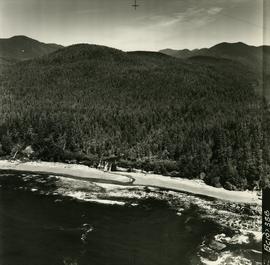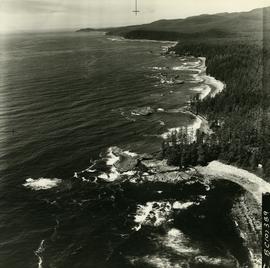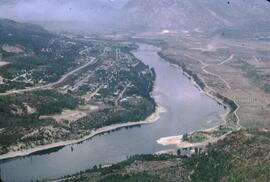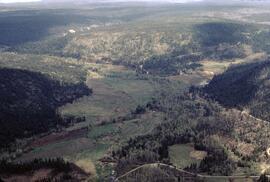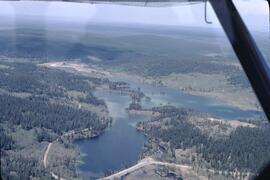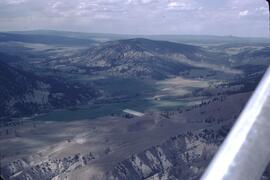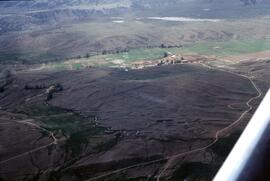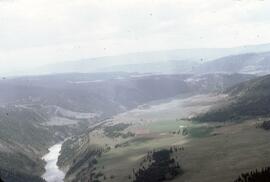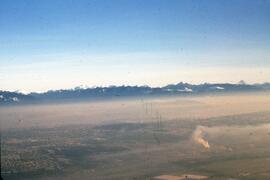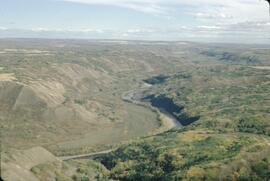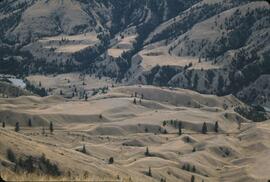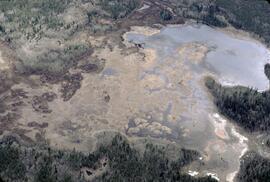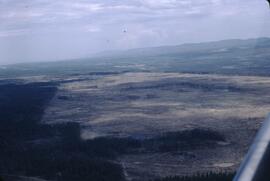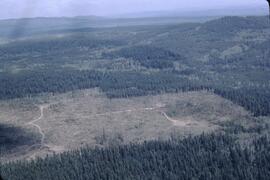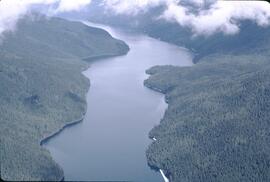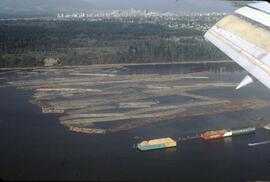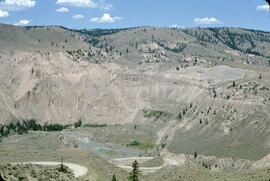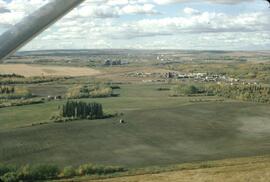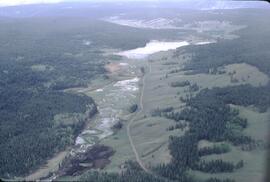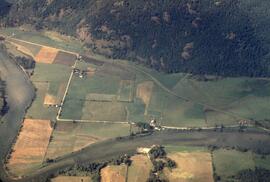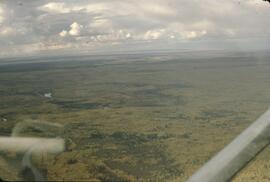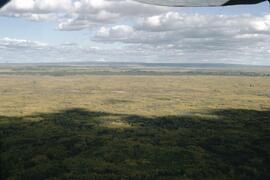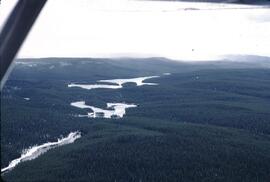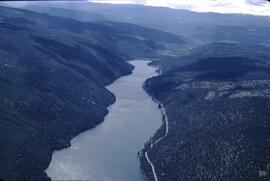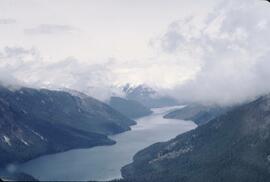Photograph depicts the 1956 High School Curling Peace River District champions of the Peace Curling Association. Coach at centre. G. Gary Runka at far right.
Photograph depicts the rockslide that occurred three years previous, which resulted in four fatalities and several kilometres of the Hope-Princeton Highway (Highway 3) impacted.
File consists of a speech given by Gary Runka entitled "Action Steps to Sustainable Agriculture" at the Forum on Sustainable Agriculture in Summerland.
Commentary on this speech by Barry Smith of the Ministry of Agriculture and Lands:
"This speech opens with a relatively broad discussion of sustainability- how defined - and how this relates to agriculture. "We've got to develop the ability to view farming in a conceptual sense, to view food production sustainability over the full horizon, including the urban world, as well as farm field."
The speech is broken into 3 sections with sub-sections:
(1) From a Practical Management Point of View. What Does "Sustainability" Mean on the Farm, Orchard or Ranch? Several points are made including the protection of land through the ALR. The principles of sustainability in, "Towards a Strategy for Sustainability" are listed.
(2) From the Food Producers Perspective, What are the Gaps in Practical Requirements to move Toward Sustainability? The points identified in the July 1994 workshop "Future of Agriculture in the Okanagan" are listed and noted as key points.
(3) With Land and Water Resources under Stress, What are the Action Steps to Regional Multicommodity Agricultural Sustainability? Under this topic seven sub-topics are explored:
a) sustainability and security of the land base with a particular emphasis on parcel size and the need for consolidation, land tenure, cost and speculation;
b) sustainability and water resources;
c) land use competition, compatibility, and planning process access - with an emphasis placed on the need for the farm community to have access to the planning process and a nod to the importance of Agricultural Advisory Committees. It is recognized that this will take an integrated effort of the ALC and Municipal Affairs;
d) vertically consistent policies and regulations from local to federal;
e) Right to Farm (with a plea to revisit the then current 'Agricultural Protection Act');
f) public education;
g) food policy; and
h) Socio-economic strategy for agriculture"
Air photograph depicts a segment of the West Coast Trail showing the beach area around the Carmanah Point Light Station. Coding on aerial is "BCO 391".
Air photograph depicts a segment of the West Coast Trail showing the beach area around the cabins at Nitinat Narrows. Coding on aerial is "BCO 390".
Air photograph depicts a segment of the West Coast Trail showing the beach area around Tsusiat Falls. Coding on aerial is "BCO 387".
Air photograph depicts a segment of the West Coast Trail showing the beach area around Tsusiat Falls. Coding on aerial is "BCO 388".
Air photograph depicts a segment of the West Coast Trail showing the beach area around Tsusiat Point Hole in the Wall. Coding on aerial is "BCO 389".
